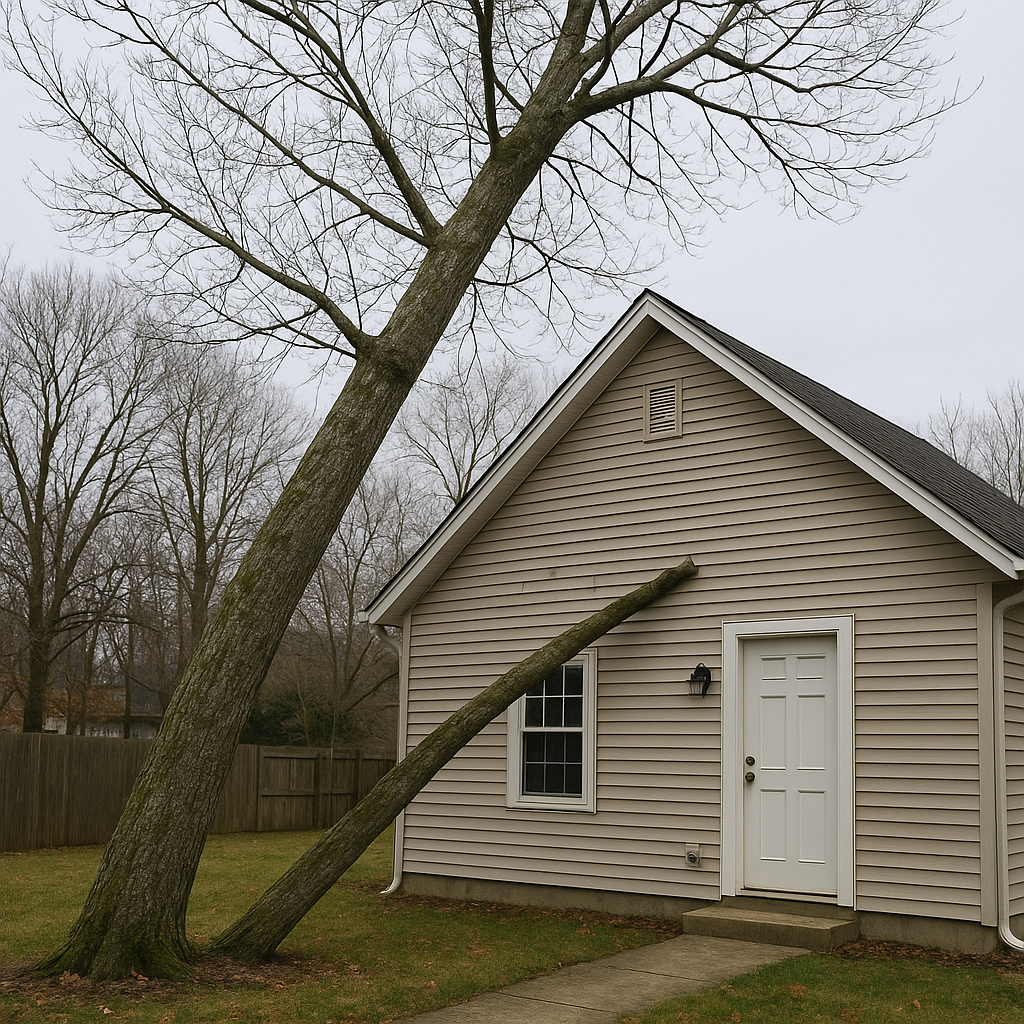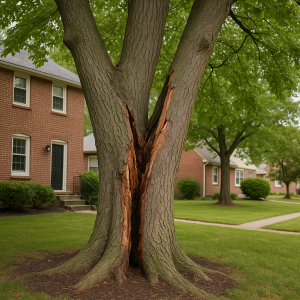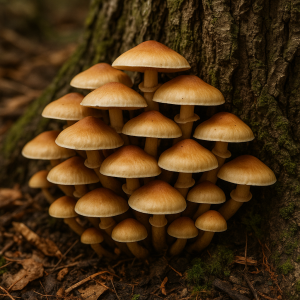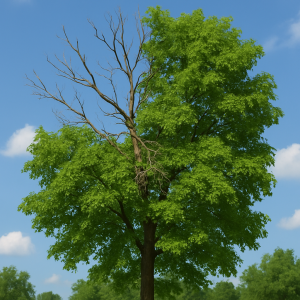Most tree failures give plenty of warning signsYour Trees Need HelpLast Tuesday, I got a call that made my stomach drop. A homeowner in Lancaster’s Eastside was frantic – a 60-foot eucalyptus had come down in the night, missing their daughter’s bedroom window by maybe three feet. “It looked fine yesterday,” they kept saying. “How could this happen?” Here’s the thing that keeps me up at night: it probably didn’t look fine. Most tree failures give plenty of warning signs, but homeowners either don’t know what to look for or they hope the problem will somehow fix itself. After twenty years of tree care in Lancaster, I’ve learned that trees are pretty good at telling us when they’re in trouble – we just have to know how to listen. So let’s talk about the five warning signs that should have you reaching for your phone to call a certified arborist. Trust me, catching these early can save you thousands in property damage and potentially save lives. 
Trees leaning toward structures require professional assessment, before disaster strikes The Lean That Wasn’t There BeforeTrees don’t just wake up one morning and decide to lean toward your house. When a tree starts leaning, something has changed – and it’s usually not good news. Now, don’t panic if your tree has always had a slight lean. Many trees grow at angles naturally, especially here in Lancaster where our Santa Ana winds shape young trees as they grow. What you’re looking for is a new lean or a lean that’s getting more pronounced. I remember working with a family on Avenue J whose beautiful oak tree had developed a noticeable lean toward their pool area over the course of just one winter. The homeowner mentioned it casually, almost apologetically, like they were bothering me with something minor. When we investigated, we found that a major root had been damaged during some landscape work the previous fall. The tree was slowly losing its anchor on one side. The fix? We were able to install a cable system and do some corrective pruning that kept the tree safe and standing. But if they’d waited another year, it would have been a removal job – and possibly a very expensive insurance claim. Dead Branches in the Canopy (The “Widow Makers”)We call them widow makers for a reason. Dead branches don’t get better – they only get more dangerous. And here in Lancaster, with our combination of drought stress and wind events, dead branches are unfortunately common. The tricky part is that homeowners often don’t notice dead branches until they’re massive and obvious. By then, you’re looking at a much more expensive and dangerous removal job than if you’d caught them early. Here’s what to look for: branches without leaves during growing season, branches with brown or brittle-looking bark, and branches that don’t move naturally in the wind – they’ll be stiff and awkward-looking compared to healthy, flexible branches. I worked with a customer last month who pointed out what he called “that ugly dead branch” in his sycamore. When I looked up, I didn’t see one dead branch – I saw seven, ranging from small to substantial. He’d been so focused on the most obvious one that he’d missed the others entirely. The lesson? Dead branches rarely travel alone. If you see one, there are probably others, and it’s time for a professional assessment. Mushrooms or Fungal Growth at the BaseThis one makes a lot of homeowners uncomfortable, and rightfully so. Mushrooms growing from the base of your tree are like a check engine light – they’re telling you something is wrong with the tree’s internal systems. Fungal growth usually indicates decay, and decay in the root system or lower trunk is serious business. The tree might look perfectly healthy above ground while being slowly hollowed out below. I’ve seen beautiful, full-canopy trees that were basically standing on compromised root systems held together by little more than bark and hope. The visual inspection from 20 feet away told you nothing – you had to get close and look for the telltale signs of fungal activity. One thing that surprised me early in my career was how quickly this can develop. I’ve seen trees go from “a few mushrooms at the base” to “major structural concern” in a single growing season, especially during wet years when fungal activity accelerates. Yellowing or Browning Leaves (Out of Season)Trees in Lancaster deal with a lot of stress – drought, heat, wind, and increasingly unpredictable weather patterns. But healthy trees are remarkably good at adapting to these conditions. When you start seeing significant leaf discoloration outside of normal seasonal changes, it’s usually a sign that something is overwhelming the tree’s ability to cope. This is where local knowledge really matters. What’s normal for a Lancaster oak in August is different from what’s normal for a maple or a palm. An experienced arborist can tell the difference between normal seasonal stress and something more serious. I remember a call from a homeowner who was worried about their citrus trees. The leaves were yellowing, and she was convinced they were dying. When I arrived, I could see that the yellowing pattern was classic iron chlorosis – a common issue in our alkaline soils that’s totally treatable with the right approach. But I’ve also seen cases where leaf discoloration was the first visible sign of root rot, pest infestation, or disease that required immediate intervention. Cracks in the Trunk or Major BranchesThis is the big one – the sign that should have you on the phone with an arborist immediately. Cracks in the trunk or major branches indicate structural failure that’s already in progress. Sometimes these cracks are obvious – big, gaping splits that anyone would notice. But often, they’re subtle stress cracks that might just look like natural bark patterns to the untrained eye. The challenge with cracks is that they often develop slowly, and homeowners get used to seeing them. What starts as a hairline crack can gradually widen over months or years until the tree is held together by little more than bark. I worked on a case where a homeowner had been watching a crack in their oak tree for “a couple of years.” They’d even shown it to friends and family, and everyone had agreed it “didn’t look too bad.” When we finally got out there to assess it, the crack had penetrated nearly 60% of the trunk diameter. That tree came down the next day – safely and controlled, thank goodness, but it was much closer to catastrophic failure than anyone realized. The Real Cost of WaitingHere’s what I wish every homeowner understood: tree problems don’t get better on their own, and they don’t stay the same. They get worse, usually slowly, until they get worse very quickly. The oak tree that needs a few dead branches removed today might need a full removal next year if those branches fall and damage the trunk. The slight lean that’s “probably nothing” might become a major structural issue after the next windstorm. But here’s the good news: most tree problems are totally manageable when caught early. The pruning job that costs $400 today might prevent the $4,000 removal job (and potential property damage) tomorrow. | 




